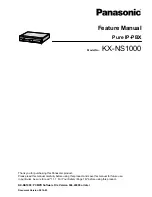
Operation Manual – Process Server Configuration
H3C XE 200/2000 IP PBX
Chapter 2 H.323 Overview
2-8
VI. Call proceeding
When the called endpoint receives the setup message, it responds with a call
proceeding message, indicating the request is being processed. It may choose not to
send this message however.
VII. Alerting
Then the called endpoints may send an alerting message to the calling endpoint
indicating its status, for example, ringing. This is optional too.
VIII. Connecting
If the called endpoint accepts the call, it sends a connect message. This is mandatory.
IX. Capability negotiation
After the calling endpoint receives the connect message, the H.245 control signaling
channel is established to control the media session between the endpoints. First, the
communicating parties exchange information on their capabilities, such as media
format.
X. Opening/closing logical channel(s)
The communicating parties open one or more logical channels between them for
transporting media streams. (The logical channels are specified by IP address plus port
number.)
These channels are closed when the communication is over.
XI. Release completing
Finally, either party in communication can release resources by sending a release
complete call signaling message.
XII. Disengaging
The endpoints send a Disengage Request (DRQ) to their own gatekeepers, who will
confirm or reject the request. The gatekeepers however, may send DRQs to the
endpoints. In this case, the endpoints can only confirm the request.
Figure 2-6
shows the flow of call setup and disconnection involving gatekeepers, or
gatekeeper-routed call signaling.
Summary of Contents for XE 200 IP
Page 7: ...Basic Configuration...
Page 42: ...Process Server Configuration...
Page 82: ...Location Server Configuration...
Page 182: ...Feature...
Page 259: ...System Management...
Page 341: ...IP Performance and Application...
Page 349: ...Media Server...
Page 360: ...Call Services...
Page 507: ...Appendix A...
Page 511: ...Appendix B...




































